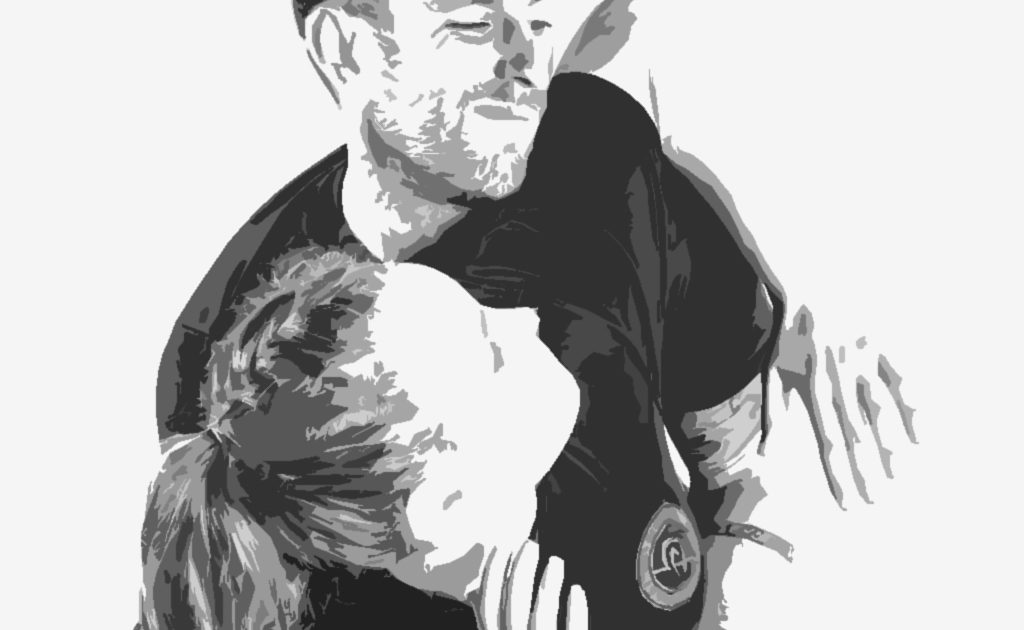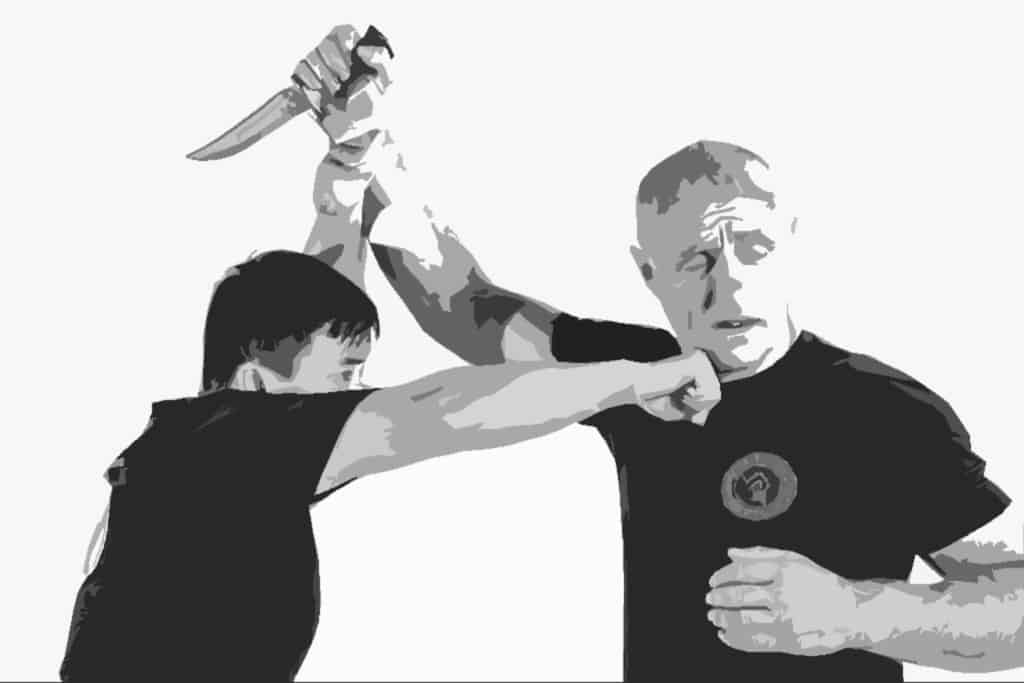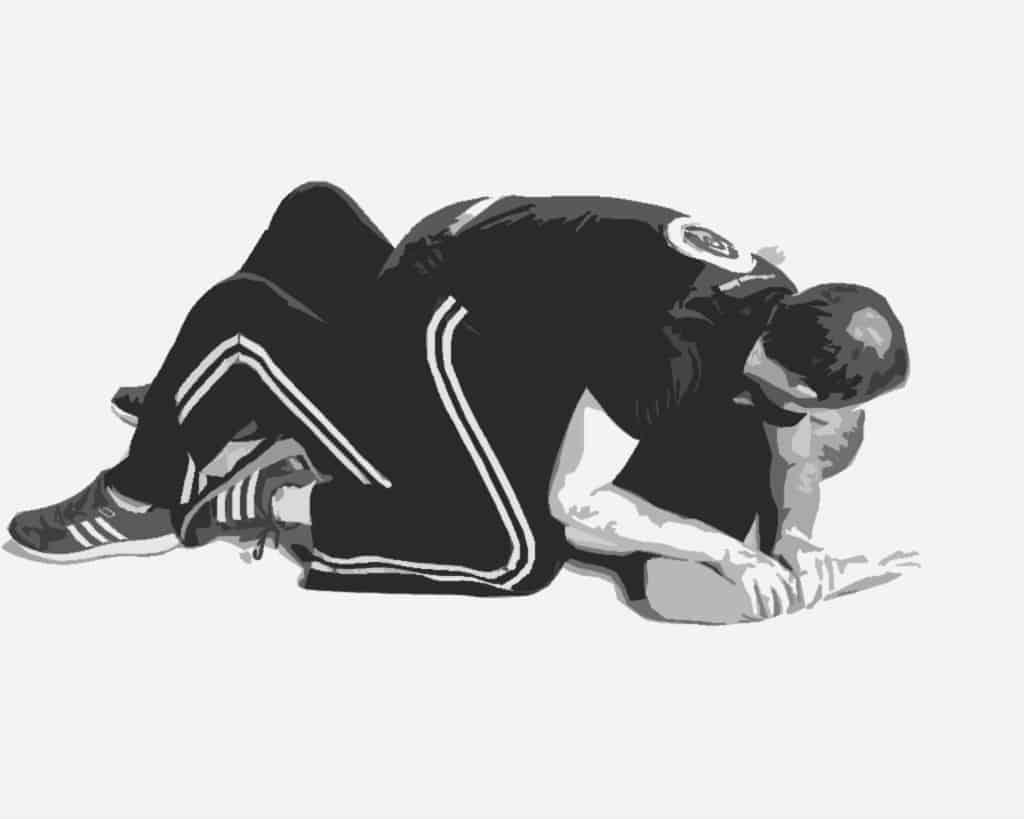The Sunday Times
“The most realistic self defence system in the UK today”
“The most realistic self defence system in the UK today”
“It (Krav Maga) has more self defence cred than any other system we know about – and we know quite a bit about the subject!”
Best in the World for self defence. It is totally practical, no flashy kicks or great spiritual angle.
Krav Maga Cambridge – The principles of Krav Maga
Krav Maga has a unique set of principles and approach to training. These principles of Krav Maga evolved from decades of front line exposure to high intensity violence and aggression. Broadly speaking, the principles of Krav Maga are divided into 2 categories. Training principles, and combat principles. The object of this short article is to outline these principles in simple terms.
1. Stop the immediate threat
The first and most immediate concern is to stop an immediate attack and prevent/reduce injury. This may mean prioritising between 2 simultaneous threats such as being held by the throat and punched in the face.This is the most important principle of all.
2. Immediate, aggressive combatives/counterstrikes
The Kravist should use fast, aggressive strikes to vulnerable areas as soon as possible. There should be the smallest amount of time between defending and attack possible. Countering quickly prevents further attacks and may stop the attacker immediately.
3. Disengage as quickly as possible
The ultimate objective of Krav Maga is survival – not defeat of an attacker. The Kravist will disengage from the assailant as quickly as possible. The majority of assaults have 2 or more attackers so it is vital the Kravist disengage quickly and escape the situation. Exceptions to this principle could be the need to protect a third party, to make an arrest, or to remove a weapon – for example a firearm.
4. Scan for the next threat
After disengaging, the Kravist must scan for further threats and dangers. An emphasis is placed on physically scanning around, as the movement of scanning helps overcome the effects of stress induced tunnel vision. Moving the head also helps the eyes identify movement in the peripheral vision.

British Krav Maga has a series of guiding principles relating to training in Krav Maga.
1. Simplicity
Techniques should be as simple as possible. Simple techniques are faster to learn. Easier to master and better retained over time. Simple techniques are more reliable in high stress situations. Complexity should be saved for sport, dance and martial arts – not survival.
2. Use Natural Responses and Reactions
Where possible, Krav Maga uses natural reactions and reflexes. Krav Maga stresses an intuitive approach to combat. This is characterised by the use of gross motor movements where possible.
3. Utility
The same defence should be used for as many attacks as possible, If each attack requires a separate defence, the Kravist would be required to learn an unending number of techniques. Instead, Krav Maga teaches a small number of techniques that are highly adaptable and easily mastered.
4. There are no rules in survival
The Kravist will use any means available to protect themselves or a loved one. Improvised weapons, striking to the groin, gouging or biting are all acceptable. Criminals recognise no code of conduct – neither should the Kravist. The prime objective is survival.

British Krav Maga has a series of guiding protocols relating to defence against edged weapons.
1. Avoid the Threat if Possible
If at all possible the threat of edged weapons should be avoided. This means if you can escape or avoid a confrontation involving edged weapons then this is the safest and most sensible choice to take. Defence against edged weapons should be a last resort – the prime objective is survival.
2. Comply if Safe To Do So
You should comply if safe to do so, especially in a street robbery situation because your life is worth more than any material possession. Remember there is no room for ego in self-defence – the prime objective is survival. The exception to this protocol would be if you or your loved ones are already under attack or if you’re being abducted.
3. Use of Improvised Weapons & Your Environment
Use improvised weapons and your environment to your advantage in order to defend yourself against an edged weapons attack. This may include the use of bags, clothing or other items as shield type weapons and the use of stools, tables or other obstacles to create space between you and your attacker to enable you to break away.
4. Use of Long Range Weapons
Use of long range weapons i.e. legs to maintain distance and enable you to break away.
5. Use of Short Range Weapons
Use of short range weapons i.e. arms, knees, elbows and head to create distance to enable you to break away. This should be your last resort.

British Krav Maga has a series of guiding principles relating to ground fighting. These principles are the same as for stand up fighting, however, fighting from the ground presents certain problems that are not always solved with the same stand up techniques. Therefore, whilst the principles remain the same the solutions to particular problems may be different.
1. Stop the immediate threat
In fighting from the ground stopping the immediate threat will usually require the Kravist to reverse their position in addition to blocking strikes or executing releases.
2. Get into a dominant position then deliver immediate, aggressive combatives
In order to to strike an opponent in a ground fighting situation, a Kravist may have to get into a dominant position first or even to their feet. Remember the universal solution to a particular problem may be different on the ground.
3. Disengage as quickly as possible
The ultimate objective of Krav Maga is survival – not defeat of an attacker. In a ground fighting situation this will usually require the Kravist to get to their feet first, as quickly as possible, before they are able to break away. Remember a Kravist is particularly vulnerable on the ground when fighting more than one assailant.
4. Scan for the next threat
A Kravist is particularly vulnerable whilst disengaging from the ground so should pay particular attention to any additional threats.
Website and Digital Marketing by RocketWorks
Netherhall Sports Centre, Queen Edith’s Way, Cambridge CB1 8NN
Call 01223979000
This site uses cookies to enhance your surfing experience. By continuing to browse the site, you are agreeing to our use of cookies.
OKLearn moreWe may request cookies to be set on your device. We use cookies to let us know when you visit our websites, how you interact with us, to enrich your user experience, and to customize your relationship with our website.
Click on the different category headings to find out more. You can also change some of your preferences. Note that blocking some types of cookies may impact your experience on our websites and the services we are able to offer.
These cookies are strictly necessary to provide you with services available through our website and to use some of its features.
Because these cookies are strictly necessary to deliver the website, you cannot refuse them without impacting how our site functions. You can block or delete them by changing your browser settings and force blocking all cookies on this website.
We also use different external services like Google Webfonts, Google Maps and external Video providers. Since these providers may collect personal data like your IP address we allow you to block them here. Please be aware that this might heavily reduce the functionality and appearance of our site. Changes will take effect once you reload the page.
Google Webfont Settings:
Google Map Settings:
Vimeo and Youtube video embeds:
